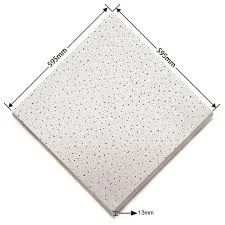Nov . 30, 2024 20:08 Back to list
ceiling tees
The Evolution and Benefits of Ceiling Tees in Modern Architecture
In the ever-evolving landscape of modern architecture and construction, the choices we make in design elements can significantly influence both aesthetics and functionality. One such element that has gained notable prominence in commercial and residential build-outs is the ceiling tee, often simply referred to as 'ceiling tees.' These components serve as integral parts of suspended ceiling systems, which have transformed the way we think about interior spaces.
What Are Ceiling Tees?
Ceiling tees are typically T-shaped metal or wood components that are used to support ceiling tiles or panels in a grid formation. They are an essential part of a suspended ceiling system, allowing for the installation of ceiling tiles at a height lower than the structural ceiling. Initially popularized in commercial settings, such as offices and schools, ceiling tees have made their way into residential homes, offering versatility and an array of design options.
Design Flexibility and Aesthetic Appeal
One of the primary reasons behind the popularity of ceiling tees is the design flexibility they provide. With various materials and finishes available, including acoustic, decorative, and moisture-resistant options, ceiling tees can be tailored to meet specific aesthetic requirements. This flexibility allows architects and designers to play with light reflection, sound absorption, and overall ambiance in a room.
For instance, in commercial spaces, ceiling tees can facilitate high-performing acoustic tiles that help reduce noise in open office layouts. In homes, designers might select ceiling tees that support beautiful decorative panels or intricate designs, adding a unique character to living spaces.
Functionality Concealing Utilities and Enhancing Safety
Beyond their aesthetic contributions, ceiling tees provide significant functional benefits. They create a cavity between the structural ceiling and the finished ceiling, which can be utilized to conceal electrical wiring, ductwork, and plumbing. This not only enhances the visual appeal of a space by rendering these systems invisible but also provides easy access for maintenance.
ceiling tees

Moreover, the use of ceiling tees can improve safety by offering fire-resistant properties and the ability to integrate fire suppression systems. Their design often allows for installations that comply with building codes and safety regulations, ensuring that spaces remain not just beautiful, but also secure.
Energy Efficiency
Another growing consideration in architecture is energy efficiency, and here, ceiling tees can play a pivotal role. By installing energy-efficient lighting within the suspended ceiling grid, designers can improve the energy footprint of a building. The use of LED panels or other energy-conserving light sources helps reduce overall energy consumption, contributing to greener buildings and lower utility costs.
Additionally, ceiling tees make it easier to incorporate insulation materials above the ceiling tiles, further enhancing thermal performance and energy efficiency. This is particularly important in areas with extreme weather conditions, where maintaining a comfortable indoor climate is essential.
Sustainability in Materials
With a heightened awareness of environmental issues, the selection of materials used in ceiling tee systems has evolved. Many manufacturers now offer sustainable options that are recyclable and produced with minimal environmental impact. Utilizing such materials not only meets the growing demand for eco-friendly building practices but also aligns with green certification programs, such as LEED (Leadership in Energy and Environmental Design).
Conclusion
Ceiling tees may seem like a small detail in the grand scope of architectural design, but they embody a balance of aesthetic appeal, functionality, and sustainability. Their adaptability to various environments, from modern office spaces to cozy homes, showcases the versatility they offer to designers and architects alike.
As we continue to search for ways to improve our built environments, ceiling tees stand as a testament to how thoughtful design can transform spaces. By understanding and implementing these components effectively, we can create interiors that are not only beautiful and functional but also conducive to the needs of modern living. With ongoing innovations in materials and design practices, the future of ceiling tees looks promising, clearly defining their place in the architectural narrative.
-
Quality Ceiling Trap Doors & Access Panels | Easy & Secure AccessNewsAug.30,2025
-
Durable Ceiling T Grid Systems | Easy InstallationNewsAug.29,2025
-
PVC Gypsum Ceiling: Durable, Laminated Tiles for Modern SpacesNewsAug.28,2025
-
Pvc Gypsum Ceiling Is DurableNewsAug.21,2025
-
Mineral Fiber Board Is DurableNewsAug.21,2025
-
Ceiling Tile Clip Reusable DesignNewsAug.21,2025







